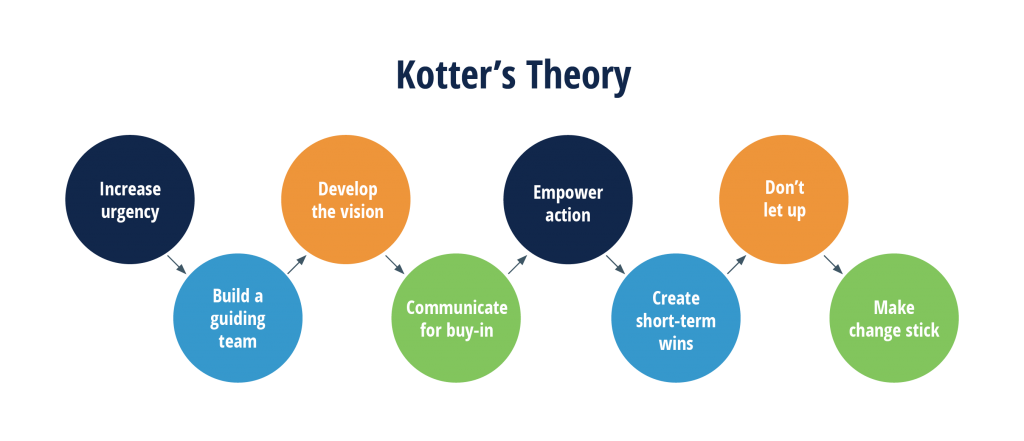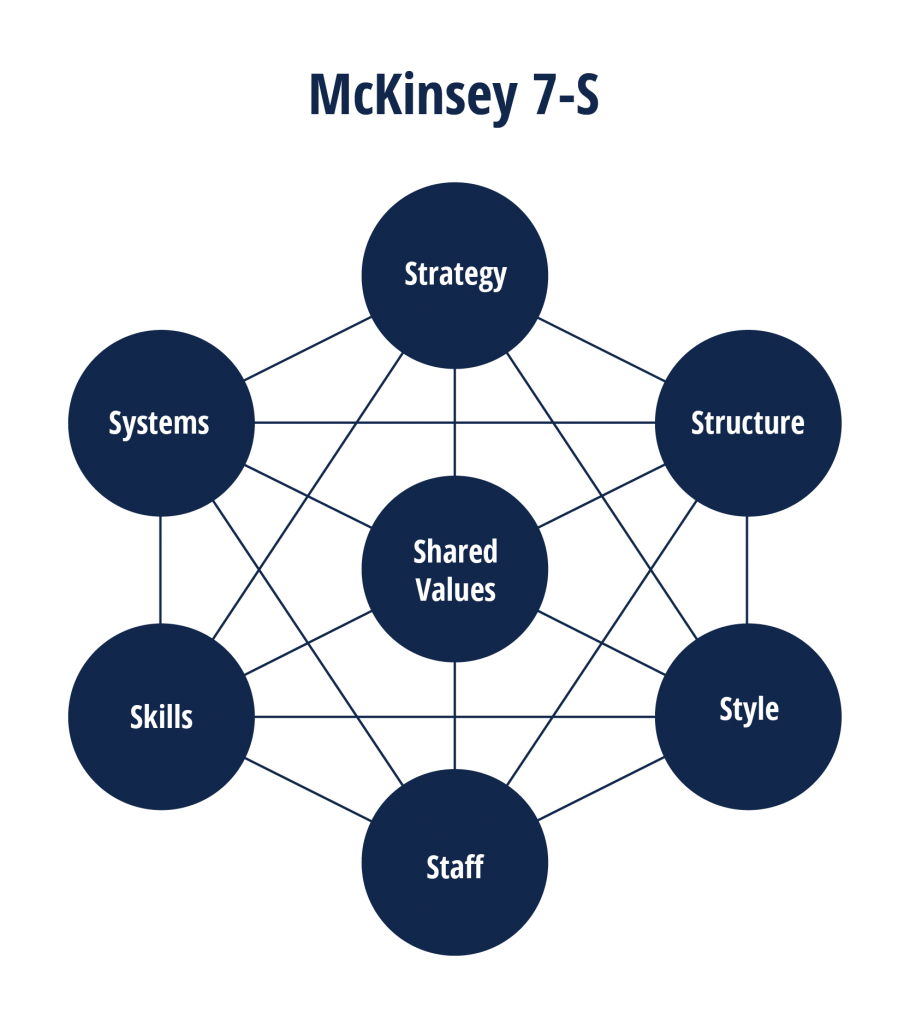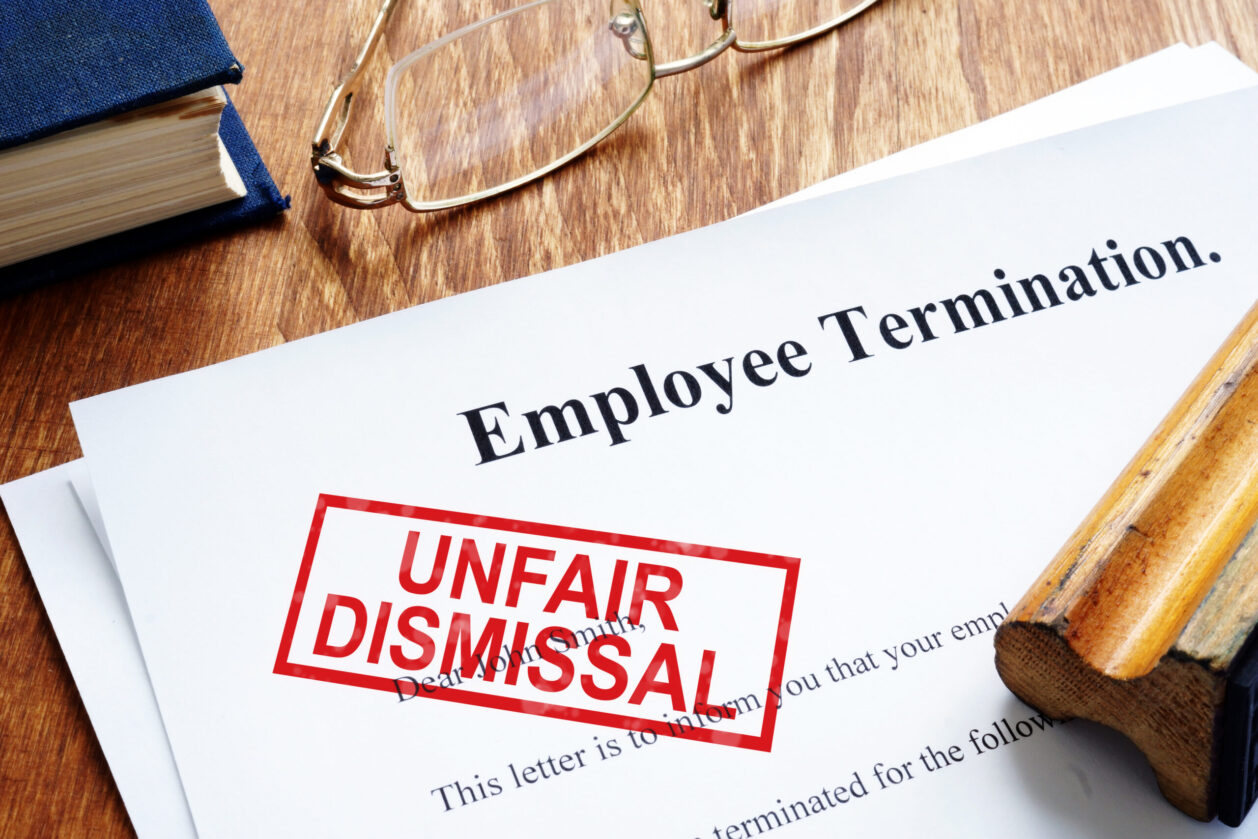Implementing a workforce strategy involves staying clear on what you’re trying to achieve as a business while remaining agile to new or shifting challenges.
Once you have your strategy set up, implementing it involves a number of steps that may include some or all of the following:
- Project Plan.
- Change Management Plan.
- Communication Plan.
- Industrial Relations Plan.
- Governance Plan.
- Reporting Plan.
- Action Plan.
Of these, a Change Management Plan is amongst the most important to ensure your workforce strategy is embraced by existing and future employees.
Kotter’s change management theory is one of the most popular and widely used by businesses. It has eight stages that focus on employees’ response to change.

- Create a sense of urgency.
- Build a guiding coalition.
- Form a strategic vision and initiatives.
- Enlist a volunteer army.
- Enable action by removing barriers.
- Generate short-term wins.
- Sustain acceleration.
- Institute change.
McKinsey's 7-S model
McKinsey’s 7-S model focuses on the seven key internal elements that a business should focus on when implementing change. The elements are divided into hard Ss (Strategy, Structure and Systems) and soft Ss (Skills, Shared Values, Staff and Style).

Workforce strategy in action
Apprenticeship Support Australia Manager Lena Constantine says above all, businesses need to “stay on course”.
"The end result will be getting the skilled workers you need and getting availability of skilled workers for your business," she says.
Here are three examples of WA businesses that have implemented successful workforce strategies.
When mining services company Monadelphous want to upskill its workforce, it gives its own staff the opportunity to step up.
The contractor’s Recruitment Manager Ann Brinkamp says encouraging internal staff to take on apprenticeships with the company is an important part of its recruitment strategy.
“A lot of apprentices would work as trade assistants for us before and the reason why they then put their hand up to say I want to do an apprenticeship is they work with our trades people, they get exposure to the work they could do,” she explains.
“They get mentored by the experienced tradespeople in the small communities.”
As a result, Monadelphous has a reputation for providing growth opportunities for its workers.
Iron ore giant Fortescue Metals Group (FMG) sees apprenticeships and trainees as a key part of its workforce planning strategy.
Third-year heavy mobile equipment apprentice Rikki Ryder is about to complete her apprenticeship with FMG, with plenty of opportunities ahead of her.
“Learning new skills in the automotive field has allowed me to grow personally and to be part of the mobile maintenance team. As the first female in my family to achieve a trade qualification, I will also be able to use my qualifications as a mechanic to help my family and the wider community,” Ryder says.
FMG CEO Elizabeth Gaines says “providing training opportunities for the next generation of our workforce is crucial” along with ensuring a sustainable pipeline of talent.
“As we continue to see technological advances in the sector, we are committed to providing re-training opportunities,” she adds.
Mining services group Perenti uses cutting-edge technology to prepare its future workforce.
Company subsidiary Barminco hosts a training facility in Hazelmere for its underground workers, and has a similar facility in Botswana.
At the training centre it prepares recruits for the rigors of mine site work by simulating mine site conditions, including temperature and atmosphere.
The group’s Chief People Officer Ben Davis explains: “Ten years ago we wouldn’t have thought that simulators with goggles would be used to simulate an underground mine, but now it’s a core part of our educating people before they go out on site.”
- Develop a business strategy
- Scan the environment
- Model the workforce
- Identify the skills gaps
- Develop a workforce strategy
- Implement the workforce strategy
- Monitor and report
Click on the links to explore CCIWA's workforce planning model.






